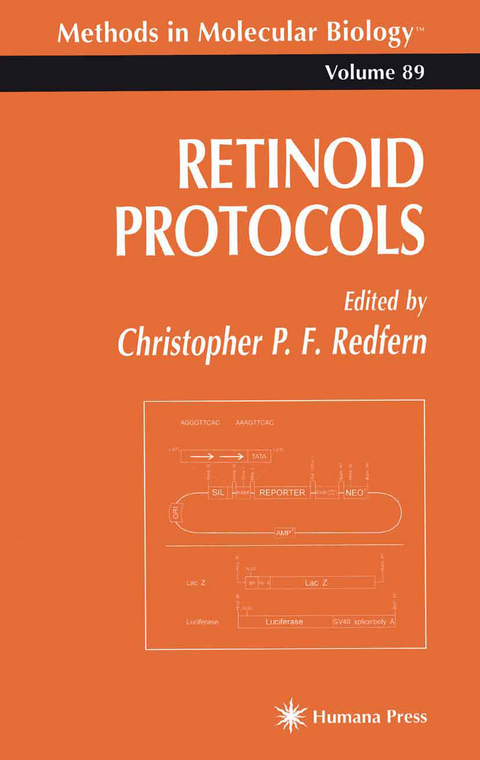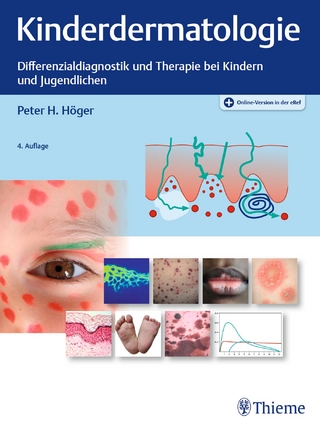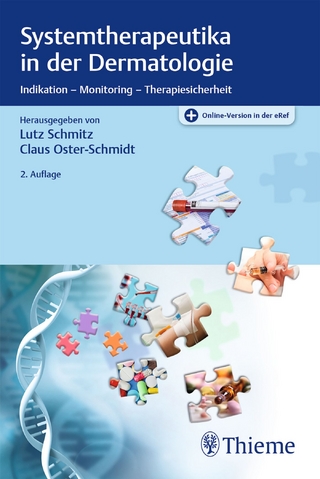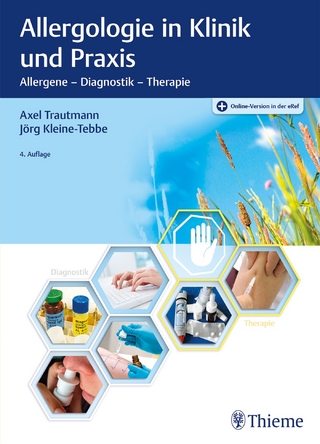
Retinoid Protocols
Humana Press Inc. (Verlag)
978-0-89603-438-9 (ISBN)
Handling and Analysis of Retinoids.- Properties of Retinoids.- Quantitative Analyses of Naturally Occurring Retinoids.- Detection and Measurement of Retinoic Acid Production by Isolated Tissues Using Retinoic Acid-Sensitive Reporter Cell Lines.- Retinoid-Binding Proteins.- Immunohistochemistry for CRBPs and CRABPs.- Whole-Mount In Situ Hybridization of Mouse Embryos Exposed to Teratogenic Levels of Retinoic Acid.- Reverse Transcriptase-Polymerase Chain Reaction (RT-PCR) for Cellular Retinoid-Binding Proteins.- Methods for Producing Recombinant Human Cellular Retinaldehyde-Binding Protein.- Expression and Purification of CRABPs from E. coli.- Purification and Fluorescent Titration of Cellular Retinol-Binding Protein.- Fluorometric Titration of the CRABPs.- Expression and Mutagenesis of Retinol-Binding Protein.- Interactions of Retinol-Binding Protein with Transthyretin and Its Receptor.- Detection of Conformational Changes in Cellular Retinoid-Binding Proteins by Limited Proteolysis.- Measurement of Rates of Dissociation of Retinoids from the Interphotoreceptor Retinoid-Binding Protein.- Use of Antisense Oligonucleotides to Study the Role of CRABPs in Retinoic Acid-Induced Gene Expression.- Nuclear Retinoid Receptors.- Preparation of Polyclonal Antibodies to Retinoid Receptors.- Detection of RARs and RXRs in Cells and Tissues Using Specific Ligand-Binding Assays and Ligand-Binding lmmunoprecipitation Techniques.- Nonisotopic In Situ Hybridization for the Detection of Nuclear Retinoid Receptor Transcripts in Tissue Sections.- In Situ Hybridization with 35S-Labeled Probes for Retinoid Receptors.- Isolation of Retinoid Receptors from Manimalian Cells.- Analysis of Retinoid Receptor Phosphorylation.- Photoaffinity Labeling of RARs and Mapping of Labeled Sites by an Endoproteinase Combination Technique.- PCR Cloning of N-Terminal RAR Isoforms and APL-Associated PLZF-RAR? Fusion Proteins.- RT-PCR in Diagnosis and Disease Monitoring of Acute Promyelocytic Leukemia (APL).- A Two-Hybrid Protein Interaction System to Identify Factors That Interact with Retinoid and Vitamin D Receptors.- Gel-Shift Analysis and Identification of RXREs and RAREs by PCR-Based Selection.- Identification and Cloning of RA-Regulated Genes by mRNA-Differential Display.- Gene Targeting of Retinoid Receptors.
| Erscheint lt. Verlag | 16.1.1998 |
|---|---|
| Reihe/Serie | Methods in Molecular Biology ; 89 |
| Zusatzinfo | XVI, 434 p. |
| Verlagsort | Totowa, NJ |
| Sprache | englisch |
| Maße | 155 x 235 mm |
| Themenwelt | Medizin / Pharmazie ► Medizinische Fachgebiete ► Dermatologie |
| Naturwissenschaften ► Biologie ► Genetik / Molekularbiologie | |
| Naturwissenschaften ► Biologie ► Mikrobiologie / Immunologie | |
| Naturwissenschaften ► Biologie ► Zellbiologie | |
| Naturwissenschaften ► Biologie ► Zoologie | |
| ISBN-10 | 0-89603-438-0 / 0896034380 |
| ISBN-13 | 978-0-89603-438-9 / 9780896034389 |
| Zustand | Neuware |
| Informationen gemäß Produktsicherheitsverordnung (GPSR) | |
| Haben Sie eine Frage zum Produkt? |
aus dem Bereich


